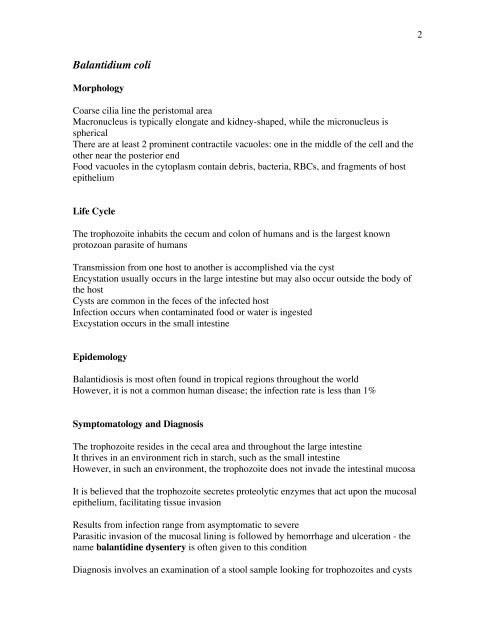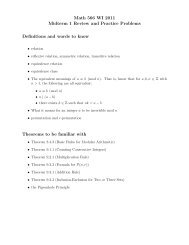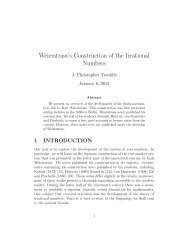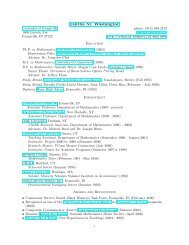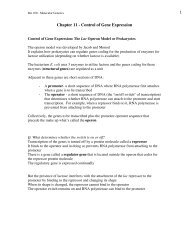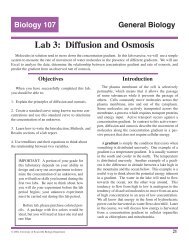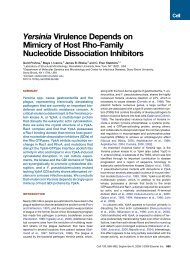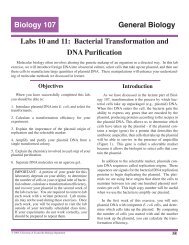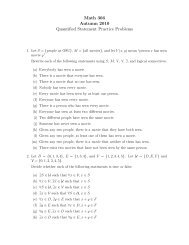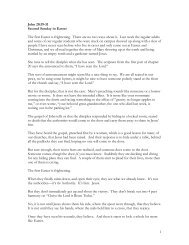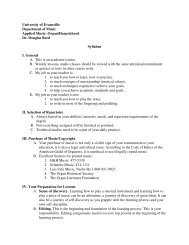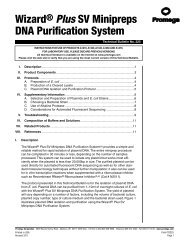Chapter 10 - Phylum Ciliophora Phylum Ciliophora Order ...
Chapter 10 - Phylum Ciliophora Phylum Ciliophora Order ...
Chapter 10 - Phylum Ciliophora Phylum Ciliophora Order ...
- No tags were found...
You also want an ePaper? Increase the reach of your titles
YUMPU automatically turns print PDFs into web optimized ePapers that Google loves.
2Balantidium coliMorphologyCoarse cilia line the peristomal areaMacronucleus is typically elongate and kidney-shaped, while the micronucleus issphericalThere are at least 2 prominent contractile vacuoles: one in the middle of the cell and theother near the posterior endFood vacuoles in the cytoplasm contain debris, bacteria, RBCs, and fragments of hostepitheliumLife CycleThe trophozoite inhabits the cecum and colon of humans and is the largest knownprotozoan parasite of humansTransmission from one host to another is accomplished via the cystEncystation usually occurs in the large intestine but may also occur outside the body ofthe hostCysts are common in the feces of the infected hostInfection occurs when contaminated food or water is ingestedExcystation occurs in the small intestineEpidemologyBalantidiosis is most often found in tropical regions throughout the worldHowever, it is not a common human disease; the infection rate is less than 1%Symptomatology and DiagnosisThe trophozoite resides in the cecal area and throughout the large intestineIt thrives in an environment rich in starch, such as the small intestineHowever, in such an environment, the trophozoite does not invade the intestinal mucosaIt is believed that the trophozoite secretes proteolytic enzymes that act upon the mucosalepithelium, facilitating tissue invasionResults from infection range from asymptomatic to severeParasitic invasion of the mucosal lining is followed by hemorrhage and ulceration - thename balantidine dysentery is often given to this conditionDiagnosis involves an examination of a stool sample looking for trophozoites and cysts


